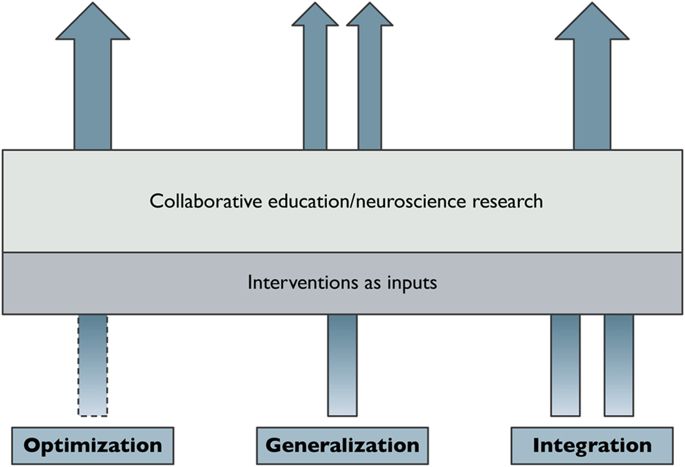npj Science of Learning ( IF 4.2 ) Pub Date : 2016-07-06 , DOI: 10.1038/npjscilearn.2016.12 Robert Colvin

|
Practical collaboration at the intersection of education and neuroscience research is difficult because the combined discipline encompasses both the activity of microscopic neurons and the complex social interactions of teachers and students in a classroom. Taking a pragmatic view, this paper discusses three education objectives to which neuroscience can be effectively applied: optimising, generalising and integrating instructional techniques. These objectives are characterised by: (1) being of practical importance; (2) building on existing education and cognitive research; and (3) being infeasible to address based on behavioural experiments alone. The focus of the neuroscientific aspect of collaborative research should be on the activity of the brain before, during and after learning a task, as opposed to performance of a task. The objectives are informed by literature that highlights possible pitfalls with educational neuroscience research, and are described with respect to the static and dynamic aspects of brain physiology that can be measured by current technology.
中文翻译:

使用神经科学优化,概括和整合教育实践
在教育和神经科学研究的交汇处进行实际协作是困难的,因为结合的学科既包括微观神经元的活动,又包括教室中师生的复杂社会互动。本文以务实的观点讨论了可以有效应用神经科学的三个教育目标:优化,概括和整合教学技术。这些目标的特征是:(1)具有实际重要性;(2)利用现有的教育和认知研究;(3)仅凭行为实验无法解决。协作研究的神经科学方面的重点应该放在学习任务之前,过程中和之后的大脑活动,而不是任务的执行。


























 京公网安备 11010802027423号
京公网安备 11010802027423号